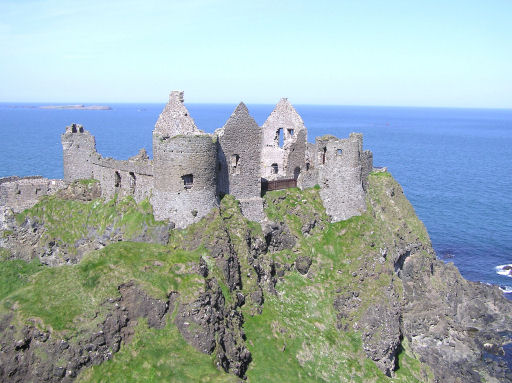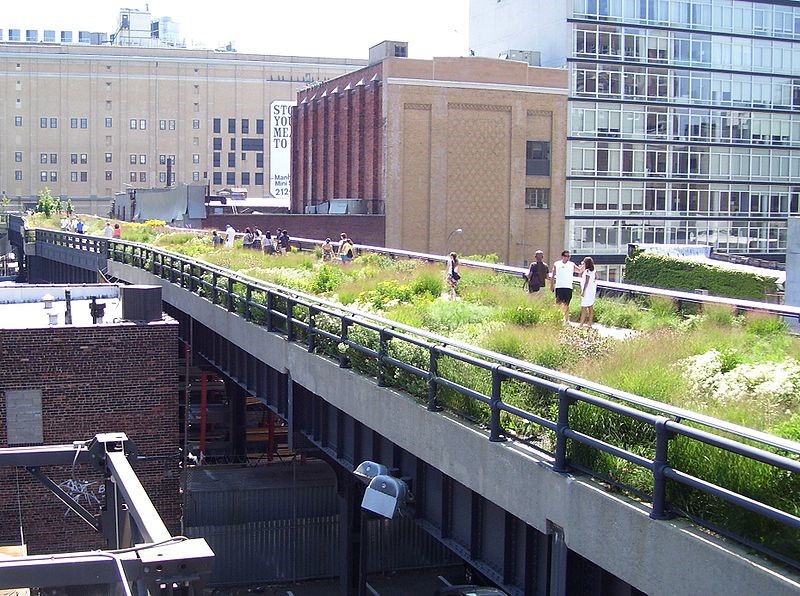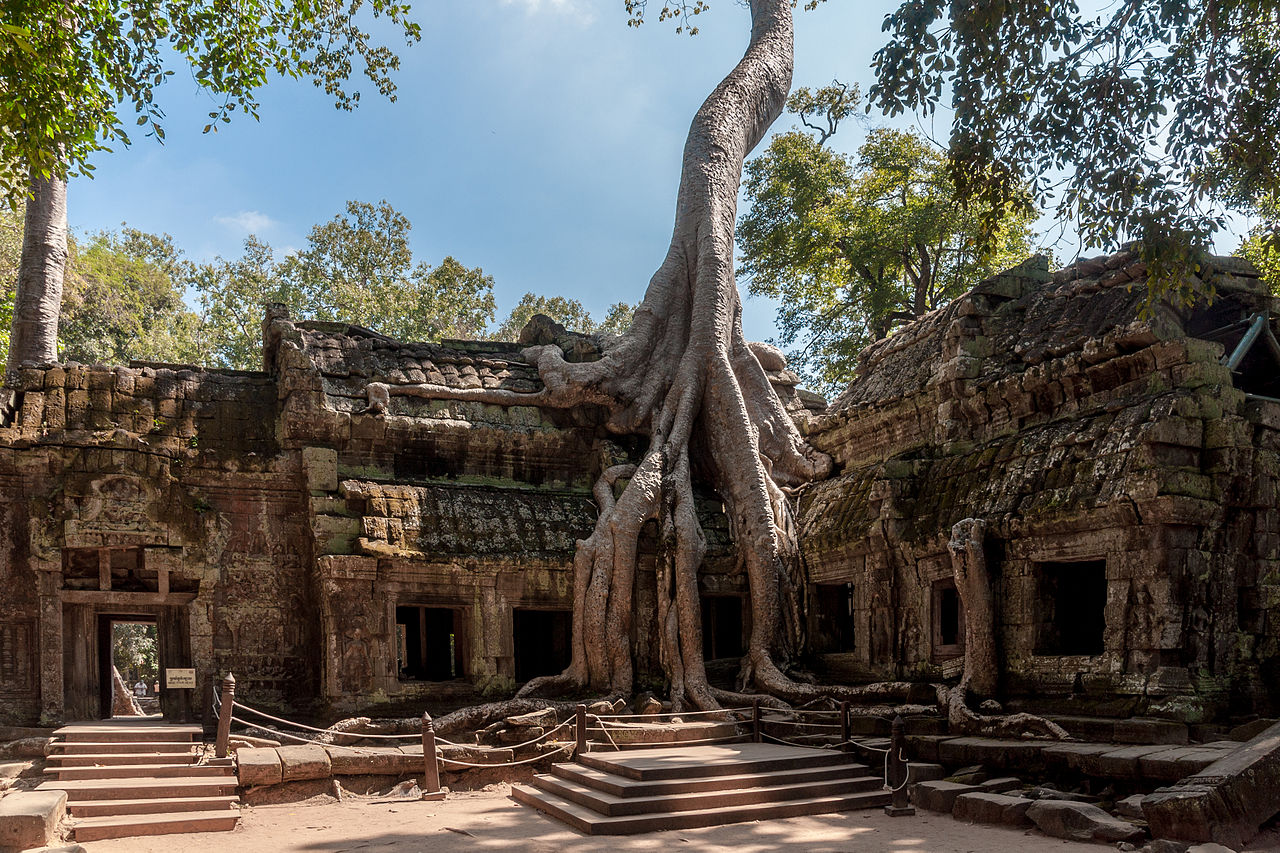1. Dunluce Castle, Northern Ireland
Dunluce Castle was built by the MacDonnell clan around 500 years ago. It’s in an amazing location – on top of craggy cliffs on the north coast of Northern Ireland. In the 1600s a visiting Archbishop described it as ‘a palace washed on all sides by the sea’.
But this amazing location is also dangerous… One stormy night in 1639 the castle kitchens fell into the sea along with 7 cooks! As coastal erosion has continued, more parts of the castle have been taken by the sea. Today Dunluce is a crumbling ruin. Who knows how long it will be before there’s nothing left of this medieval fortress?

Dunluce Castle, Northern Ireland. Image credit: Kenneth Allen CC-BY-SA 2.0
2. Chernobyl, Ukraine
The most disastrous nuclear accident in history happened in 1986 at the Chernobyl Nuclear Power Plant. An experiment designed to test the nuclear reactor’s safety went horribly wrong, leading to a huge explosion and fire. This released harmful radioactive material into the surrounding environment – killing thousands of people, and plants and animals too.
An exclusion zone was set up 30 km around the plant and everyone was evacuated to reduce their contact with the radioactive materials. Today – 30 years after the disaster – only a few people live in the exclusion zone.
But wildlife seems to have made a comeback in the exclusion zone. Elks, wolves, wild boars, foxes and deer have all been spotted in healthy numbers. In fact, some scientists say wildlife is doing better inside the exclusion zone than outside it – probably because there are no humans to hunt them or ruin their habitat. In some ways, the exclusion zone has become an odd kind of Wildlife Park.

Fox in the Chernobyl exclusion zone. Image credit: Vic Harkness CC-BY-SA 2.0
3. Okunoshima Island, Japan
In World War II the island of Okunoshima in Japan was home to a huge factory for making poisonous gas. Between 1929 and 1945 over 6,000 tonnes of gas were secretly produced here. Lots of unlucky rabbits were kept at the factory and used for testing the gas. And it’s said that after the war – when the factory was abandoned – they were released into the wild.
The rabbits have really thrived and hundreds of bunnies now call the island home. As the island’s so isolated, there are not many predators either – so the number of rabbits will probably rise and rise. The cute rabbits have also become a bit of a hit with tourists. You can even buy food to feed them when you visit the island.

Children feeding the rabbits at Okunoshima Island. Image credit: Jdlrobson CC-BY-SA 4.0
4. New World Mall, Bangkok, Thailand
The New World shopping mall was once one of Bangkok’s most popular malls. But it was closed in 1997 after it was found that it had been built illegally. A few years after it was abandoned a huge fire destroyed the roof – then the monsoon rains flooded in and filled the bottom floors.
This man-made ‘pond’ became a breeding ground for mosquitos, so locals introduced koi carp and catfish – hoping the fish would eat the insects. The fish did their job and actually flourished in the urban pond, swimming between escalators and old shop-fronts. It’s estimated that the shopping mall was home to 3000 fish.
The urban aquarium became a hit with locals and tourists alike, who broke into the abandoned building to feed the fish. But a few years ago, the fish were set free.and the urban aquarium is no more. The old mall is being demolished to make way for new buildings.
5. The High Line, New York, USA
The High Line is a unique public park in Manhattan, New York. It sits on an old elevated railway track – 10 meters above the city’s streets. Built in 1934, it was used to transport food and other goods between New York’s factories and warehouses. But over time, trucks became more popular for transport and the train track was used less and less. It eventually closed in 1980.
After the trains stopped running, the track was abandoned and it quickly became covered with wild plants. There were plans to demolish the crumbling track, but local residents convinced the council to turn it into a ‘park in the sky’. The 1.45 mile-long park is now a beautiful oasis above the city, popular with both locals and tourists.
A local volunteer group raises money to support the High Line, and puts on lots of events in the park – you can take historical tours or even go to dance classes in the park. From an abandoned railway track to a world-famous park, The High Line has been a big success.

The High Line in Manhattan, New York City at West 20th Street, looking downtown. Image credit: Beyond My Ken via Wikicommons
6. Ta Prohm Temple, Cambodia
Stepping back in time, the Ta Prohm temple at Angkor, Cambodia was built in the late 1100s. This huge Buddhist temple is made up of lots of towers, little courtyards and hidden rooms. Records say that over 12,500 people used to live at the temple – including priests and dancers.
The temple was abandoned in the 1400s and lay derelict for centuries. Over time, the jungle slowly swallowed the temple. Huge trees grew on top, around and out of the ruins – completely taking over. In some places, the trees have crushed the ruins, but in other places, the trees actually hold the buildings up!
The ruins have been mostly left as they were originally discovered, and are now open for visitors to explore. It might feel like you’re stepping into a movie – especially as the temple was used for filming some of the Tomb Raider film.

Tha Prom Temple at Angkor, Siem Reap, Cambodia. Image credit: CEphoto, Uwe Aranas, CC-BY-SA 3.0
Are humans more | important than plants?
Vote now-
Read More
-
Watch More
- People and plants: balancing conservation and commerce
- 5 human impacts on the environment
- Whose responsibility is it to take care of our planet?
- Let’s cut down more trees!
- The earth’s giant game of tetris
- Can humans live without plants?
- Can plants talk to each other?
- Give peas a chance
- How do climate change and extreme weather impact our ecosystems?